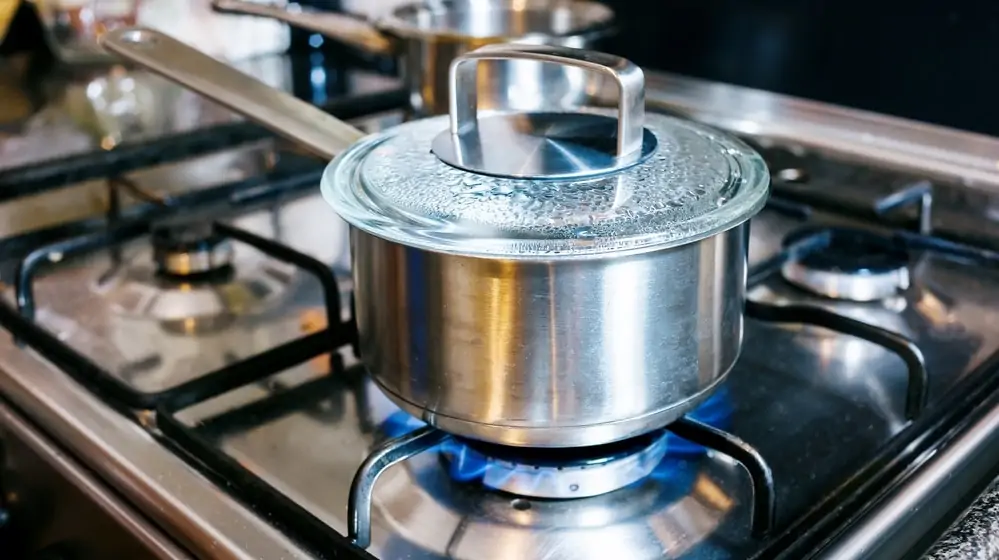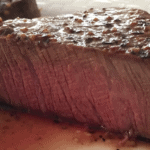Do you own a sauce pan? These cookware tools are small but mighty, capable of accomplishing almost any cooking task that involves liquid. These pans heat soups, sauces, gravies, and more with extreme efficiency.
Saucepans tend to run on the small side. Other cookware, like frying pans, can come in a wide variety of size options. The range for saucepans is a bit different, with most of the offerings running on the smaller end.
You can find a saucepan as small as 1 quart or as large as 4. Though this size range is limited, there are some surprising ability differences among them. Plus, depending on what you’re cooking, some saucepans are more up to the task.
If you want to figure out what saucepan size you should be using, you’ve come to the right place! In this article, we’ll walk you through the different sizes of saucepans you’re likely to encounter while looking to buy. Then, we explain what these sizes do best, so you can pick the pan that is perfect for you.
Let’s begin!
What Saucepan Size Should I Use?
The size of your saucepan depends on how you intend to use it. As saucepans are primarily for cooking liquids, they are measured in quarts. The standard sizes of saucepan can come anywhere in the 1 to 4-quart size range.
The most popular sizes you’ll find are 2 quart and 3-quart saucepans. Some brands may adjust these sizes by half a quart. It’s not uncommon to see 1.5 or 2.5-quart saucepans.
Saucepans are known for their small size, which is why their size range is so limited. Any saucepan that can fit more than 4 quarts is no longer considered a saucepan. 4 quarts and up is where you get into stockpot territory.
The size of your saucepan will determine what and how you cook with it. The smaller the size, the smaller the portion. Smaller sizes will also affect the rate at which pans can heat and the kinds of foods that can fit inside.
You may think bigger is better, but that’s not always the case! Small saucepans have their uses, as do big ones. Let’s break down what each saucepan size is best for.
1-Quart Saucepan
The smallest you’ll find most saucepans is around 1 to 1.5 quarts. These smaller pans are ideal for cooking small quantities of pasta sauce and any single-serve portions of liquid foods.
If you’re making pasta for one, hard boiling a few eggs, or making a single can of soup, this pan can get the job done! As they’re so small these pans can heat faster than larger saucepans, meaning you can cook fast.
These saucepans are also super popular in professional kitchens. Some individual dishes may require cooks to make specific sauces for just one plate. A saucepan of this size can get the task done quickly and minimize food waste by keeping portions small.
This smaller saucepan will be super lightweight and easy to maneuver. If bulky pots and pans are an issue for you in the kitchen, this small size can help you move with more ease.
2-Quart Saucepan
You can up the portion size with a 2-quart medium saucepan. This small sauce pan is still pretty small and compact, making it great for those looking to save space in their kitchen. This saucepan is great for prepping food for 1 to 2 people.
Here you can accomplish some larger batches of boiled vegetables like potatoes. It can also cook larger portions of smaller grains, like rice, lentils, or quinoa.
3-Quart Saucepan
The portions keep getting bigger! The average saucepan owner likely owns a 3 quart-sized saucepan. This size pan is great for most families, able to handle some larger, heartier cooking.
If you want to make your family portions of things like chili or oatmeal, this pan can get it done. It’s ideal for feeding 2 to 4 people at a time, depending on what you’re cooking.
4-Quart Saucepan
The 4 quart saucepan is the biggest you can get. Large families that need saucepans should try to look for one of this size.
This larger saucepan can create larger portions of soup, pasta sauce, and stocks for 3 to 5 people. If you’re someone who likes to batch cook for meal prep, this can help you cook the exact amount of food you’d need for the week. It’s also great when making sauces for groups. If you’re on Thanksgiving gravy duty, this pot will make enough for the whole family.
Here you’re getting the saucepan at its potential heaviest. While this won’t be as hard to maneuver as some other larger cookware like a stockpot, it may still be challenging for some cooks to pick up and move.
5-Quart and Over
We said that saucepan sizing stops at 4 quarts, but that doesn’t mean you can’t find them bigger. While it’s true that the average saucepan stops at 4 quarts, it is possible to find them as large as 7 quarts when looking for professional, restaurant-quality kitchen equipment.
Saucepans of this size are usually reserved for restaurant and catering chefs who are preparing large quantities. While many cooks would rather use a larger pot like a stockpot, there are advantages to these supersized, one-handled saucepans. They can cook large volumes while remaining more movable and adjustable than other cookware.
Why Saucepan Size Matters
These are some of the factors the size of your saucepan will affect:
Movability
As we touched on above, the larger the saucepan, the heavier it becomes. Some cooks can struggle with moving large, bulky cookware. They can also struggle to store it in the kitchen if the pots and pans take up too much space.
If you need pots that can be easily moved and stored, then smaller ones are better. You may not be able to cook huge portions, but you’ll save a lot of space and sweat in the kitchen.
Heat Conduction
The size of your saucepan can affect the rate at which it conducts heat. The smaller the size of your pan, the faster it will heat up. This can be handy for those looking to cook with speed, but it can lead to a higher likelihood of burning your food and scorching your pan.
If you’re cooking for one and want water to boil pronto, you’ll love the heating speed of 1 quart and 2-quart saucepans. However, if you are looking for the kind of heat that is low, slow, and simmering, larger sizes are better. Larger pans don’t run as high a risk of boiling over and heating too fast, which can benefit some cooking styles.
Stovetop Size
Before you buy your saucepan, you should keep in mind the size of the stovetop you’ll be cooking on. While the average stovetop should fit even a 4 quart saucepan, we know not all cooks are blessed with conventional stoves.
If you are cooking on a hot plate or even a smaller apartment-style stove, check your elements to see their size. There’s a chance that your heat element could be too small for some saucepans. In this case, you’d do better to size down.
Storage Space
The bigger the skillet size, the harder it can be to store. Saucepans can be tricky to put away in cupboards and closed cabinets because of their single, long handle.
This long handle is important in maneuvering saucepans on and off heat, fast. However, they can get annoying and stay in the way, taking up valuable storage space.
Before you order a saucepan, you should measure your cupboards or drawers to make sure the saucepan can fit, handle included. If you need to save on space, there’s a chance you’ll need a smaller size saucepan.












